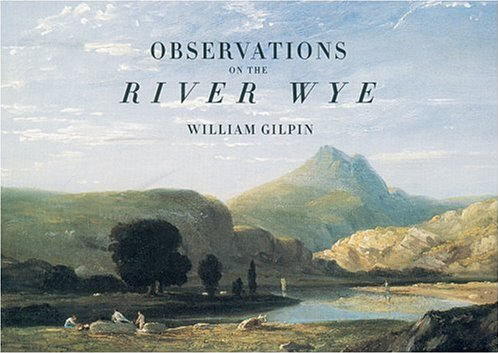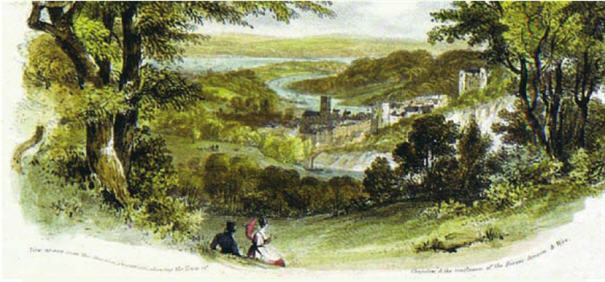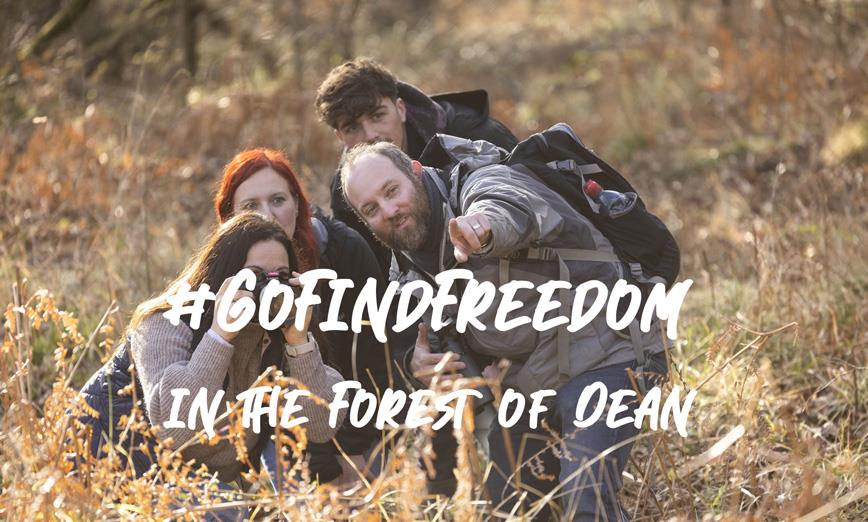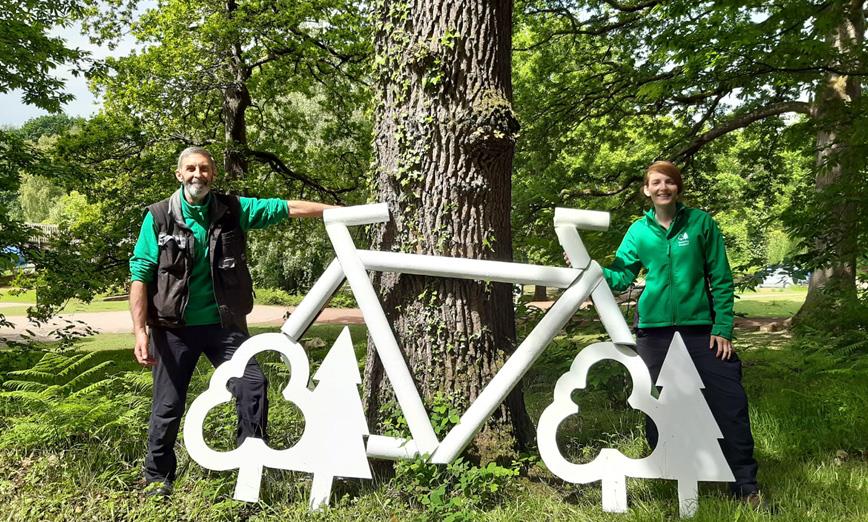- Stay
- What's On
- Things To Do
- Food & Drink
- Explore
- Inspiration
- Offers
- Weddings
- Blog
My Planner
- Stay
- What's On
- Things To Do
- Food & Drink
- Explore
- Inspiration
- Offers
- Weddings
- Blog
You are here: Explore > History & Heritage > The Wye Tour
The Wye Tour was the first organised tour in Britain, leading to the area being dubbed 'the birthplace of British Tourism'. It consisted of a boat tour down the River Wye from Ross-on-Wye in the north to Chepstow in the south and was a popular excursion during the eighteenth and nineteenth centuries. It reached its peak popularity during the Napoleonic Wars (1803–1815), when travel to Continental Europe (especially the fashionable Grand Tour) was not an option.
‘Tourists’ dined at specific locations, took walks to particular viewpoints and visited specific romantic ruins. It was seen as a fashionable thing to do and a 'must do' for those who could afford to holiday.
Visitors to the Wye Valley today are following in the footsteps of many an eighteenth century traveller, sketchbook in hand, eagerly pursuing the British equivalent of the European Grand Tour. The man who popularised the Wye Tour, pioneered the area for its Picturesque beauty, and contributed to its reputation as the birthplace of British Tourism, was the Reverend William Gilpin. Gilpin’s ‘Observations on the River Wye’ appeared in print in 1782 (although his journey actually took place in 1770) and was a sensation.
Gilpin wrote: ‘If you have never navigated the Wye, you have seen nothing.’ His writings influenced the remarkable popularity of English landscape painting during the last decade of the 18th Century, and inspired the Romantic poets. Arguably the first tour guide to be published in Britain, it was one of a series of illustrated guidebooks to help travellers locate and enjoy the most Picturesque aspects of Britain.
In fact, it was many years earlier, in 1745 that the true originator of the 'Wye Tour', Dr John Egerton, started taking friends on boat trips down the Valley from the rectory at Ross-on-Wye. Little did he know that he had started a trend, and once Gilpin’s guidebook was published, demand grew so much that by 1808 there were eight boats winding their way down the Wye.

By the end of the eighteenth century, the Wye Valley was witnessing the birth of British tourism. By 1850 more than 20 of the more literate 'tourists' had published their own accounts of the Wye Tour. Some of the most famous poets, writers and artists of Gilpin’s day made the pilgrimage to the great sights of Goodrich Castle, Tintern Abbey and Chepstow Castle - among them Pope, Coleridge, Wordsworth, Thackeray and Turner. The many guidebooks, engravings and paintings ensured a continuing steady stream of visitors. Some of these works are today held in the collections at Chepstow and Monmouth Museums.
The first of Britain’s great landscapes to be ‘discovered’, the Wye Valley’s particular attraction was its river scenery. The Wye’s meandering course through the Herefordshire Lowlands and especially through the Wye Gorge was and remains alluring to visitors today. Most of the truly Picturesque scenes were sketched from river level, with the shimmering water as the foreground for the brooding forests and cliffs behind. It was also accessible and small in area: the tour was a linear one, unless you carried on into South Wales. The Wye Valley was also a landscape of ruins, including the riverside castles of Wilton (now privately owned), Goodrich and Chepstow and the breathtaking Tintern Abbey, and ruins were very important to the notion of the Picturesque.
The arrival of the railway in 1876 made the valley even more accessible. In the early 1900s, crowds of up to 1,300 would travel on a special train journey to see Tintern Abbey on the night of the harvest moon. Today, the Wye Gorge between Ross-on-Wye and Chepstow is one of the best known and most visited landscapes in southern Britain.
Tintern Abbey was undoubtedly the most eagerly awaited stop on the Wye Tour. 'A more pleasing retreat could not easily be found' wrote Gilpin in 1770, drawing attention to the mixture of woods and glades, the winding river, the splendid ruin and the surrounding hills, which ‘make all together a very enchanting piece of scenery'. Wordsworth was also captivated by the abbey and its setting, observing in 1798 in his ‘Lines Written a Few Miles Above Tintern Abbey’ (actually written about Cleddon Falls at Whitestone above Llandogo) the ‘steep and lofty cliffs’, the waters ‘rolling from their mountain springs with a sweet inland murmur’ and the ‘wild green landscape'. One of the many tourists to marvel at this view was the Romantic poet Coleridge (1772-1834) who wrote: ‘Oh what a godly scene... The whole world seemed imaged in its vast circumference.’

The earliest known aesthetic appreciation of the Wye Valley’s spectacular views and natural beauty can be dated back to the very beginning of the eighteenth century, when John Kyrle 'The Man of Ross' developed the ‘Prospect’ at Ross-on-Wye. Kyrle selected his viewpoints not because of their strategic value in military or commercial terms, but because they commanded a good view over the surrounding landscape.
As a consequence of the Picturesque Wye Tour even more viewpoints arose at points along the Wye Valley. They include those at Upper and Lower Wyndcliffe near Chepstow and Symonds Yat Rock. The viewpoints split into two categories: the views from the river and the views of the river from the cliffs and hills above. Today, it is the higher views that are the most popular; ironically, few of them are classically Picturesque in Gilpin’s terms.
Today, water tours are plentiful (including by canoe, kayak and paddleboard), hotspots such as castles are open to the public daily and with GPS on mobile phones, navigation to even the most remote viewpoints can be carried out with ease. But the majestic beauty of the Wye Tour has not changed, and the landscapes seen from the river are little different to those Gilpin would have seen some 250 years ago. Why not step back in time and enjoy a picturesque tour of the Wye Valley yourself?
MORE INFORMATION:
Find out more about the history of the Wye Tour from Wye Valley AONB here.
You can download a brochure on The Picturesque Wye Tour here.
'Gilpin 2020' was due to be a year-long celebration of the 250th anniversary of the publication of his tour guide. Unfortunately many events were cancelled due to COVID-19 but details of the history and celebrations can be found here.
Now Explore The Wye Tour Yourself:
Find Your Freedom
- The nation's favourite river, flowing through some of the most beautiful lowland scenery in Britain. Find out about the Wye Valley AONB.
- When we talk about British architectural icons, they don’t come much more iconic than Tintern Abbey: a Gothic masterpiece and Romantic symbol of the sublime.
- With over 600 years' history weaved into its walls, that notion of rediscovery is no more evident than at Chepstow Castle. Beautifully preserved and stretching out along a limestone cliff above the River Wye, Chepstow Castle’s beauty is matched only by its historical significance.
- A long distance national trail which follows the course of the River Wye from its source in mid-Wales to its confluence with the River Severn at Chepstow in Monmouthshire offering some of the most beautiful views of the Wye Valley.
- A long distance national trail running along the border between England and Wales. It begins in the south at Sedbury Cliffs in Gloucester on the Severn Estuary in England to the east of the River Wye and for about 70 miles of the southern section through the Wye Valley AONB follows the course of the Offa's Dyke earthwork.
- Ross-on-Wye is a characterful market town in the south of Herefordshire offering excellent places to stay, eat and shop. Set in beautiful countryside right alongside the River Wye it’s a great place for fresh air, walking and canoeing with a bustling town centre full of arts and crafts, food and drink, a thriving antiques industry and many historic buildings. Ross-on-Wye is also the birthplace of modern tourism with a fascinating history.
- Breathtaking views of the Wye Valley and River Severn from the Eagle's Nest at the top of a steep, wooded limestone cliff.
- Internationally renowned viewpoint with fantastic views over the Wye Valley. A car park, cafe and shop are nearby and there are woodland walks all around including down to Symonds Yat East village.
- 1 Jan 202531 Dec 2025
- Historic path along cliffs overlooking the River Wye popular during the Wye Tour. Part of the Wye Valley Walk north of Chepstow and leading to the Eagle's Nest Viewpoint.
- A stunning section of the Wye Valley Walk high above the River Wye with some of the most impressive views along the Wye Valley. The thundering Cleddon Falls are the biggest in the area and the Duchess Ride Viewpoint is one of the best.
- The Wye Valley is one of the most scenic places in the UK and an ideal setting for water based adventures. Whether in a canoe, a kayak or on a stand-up paddleboard, take to the water and see this beautiful area as it is meant to be seen - from the river itself.
©Visit Dean Wye 2025. All Rights Reserved.
*Visit Dean Wye is the trading name of Forest of Dean & Wye Valley Tourism Limited.









